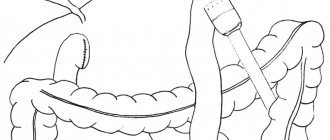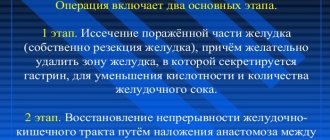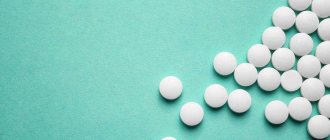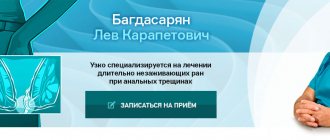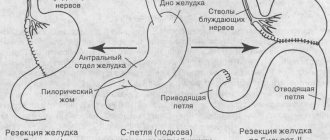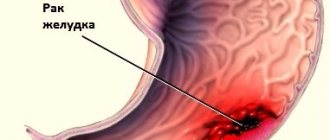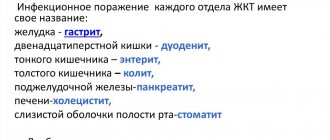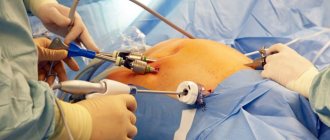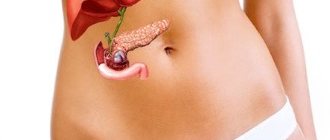Author Peter Deryabin
02/11/2008 00:27 (Updated: 04/27/2020 11:01)
Health » Health and prevention » Diet
Even gastroenterologists don’t know how many people actually suffer from various gastrointestinal diseases. As a rule, we treat ourselves. But, alas, such treatment often ends with gastric resection. And after that the question arises: what can you eat now and what can’t you eat?
General rules
Resection of the stomach or part of it in a number of cases is the only possible method of treating and saving the patient’s life. Stomach surgery is a radical method of treating extensive malignant neoplasms ( stomach cancer ), stomach ulcers , polyps, and gastric bleeding that are not amenable to conservative treatment. Despite the progress of medicine, gastric removal remains one of the most difficult surgical operations, and even if it is successful and there are no significant complications, rehabilitation takes a long period of time, and nutrition after gastric surgery is the most important component of this process.
Diet after gastrectomy or after removal of part of the stomach
Parenteral nutrition after gastrectomy begins with Diets No. 0A , 0B , 0B ( 1A , 1B , 1B surgical) prescribed sequentially. Their intended purpose is to provide the patient’s body with a minimum amount of basic food nutrients, unload and spare the stomach, and prevent intestinal bloating and flatulence . The diet contains easily digestible foods containing complete proteins, fats, carbohydrates, vitamins and macro/microelements and an increased amount of free fluid. Salt consumption is sharply limited.
On the first postoperative day, the patient is shown to be hungry; on day 2 - the diet includes 250 ml of warm sweet tea and rosehip infusion (50 ml), which are given after 15-20 minutes in a teaspoon; on days 4-5, in the absence of abdominal bloating and normal peristalsis, Diet No. 0A and 2 soft-boiled eggs are prescribed; on days 6-8 Diet No. 0B ; on days 9-11 - Diet No. 0B .
- Diet No. 0A . Contains 5-10 g of proteins, 15-20 g of fats and 180-200 g of carbohydrates. The volume of free liquid is 1.8-2.2 l, sodium chloride is no more than 1-2 g. The energy value of the daily diet varies between 760-1020 Kcal. Food is served in liquid form. Fractional diet - up to 7-8 times a day and the amount of food per meal is no more than 250 g. The diet includes mucous decoctions with cream, light low-fat meat broth, fruit and berry jelly/jelly, sweet rosehip decoction, fruit and berry juices . Dishes with a pureed and dense consistency, drinks containing carbon dioxide, and whole milk are completely prohibited.
- Diet No. 0B . Contains 40-50 g of protein, 50 g of fat and 250 g of carbohydrates. The volume of free liquid is up to 2 l/day, sodium chloride is no more than 4-5 g. The energy value of the daily diet is 1580-1650 Kcal. Food is prepared in liquid/puree form. Diet - up to 6 times a day, portion size should not exceed 400 g. In addition to the permitted products of Diet No. 0A , the diet is expanded by adding mucous cereal soups cooked in vegetable broth, soft-boiled eggs, liquid pureed rice and buckwheat porridges cereals, protein steamed omelettes, pureed dietary meat and fish, sweet berry jelly.
- Diet 0B . It is a diet of a transitional stage to subsequent physiologically complete nutrition. Contains 80-90 g of protein, 70 g of fat and 320 g of carbohydrates. The volume of free fluid is 1.5 l/day. Sodium chloride no more than 6-7 g. The energy value of the daily diet is 2100-2400 Kcal. Food is served in puree form. Diet: 5-6 times a day. The diet additionally includes cream/mashed soups, pureed steamed meat and fish, pureed cottage cheese with cream, fermented milk drinks, baked apples, pureed fruit/vegetable puree and 50-75 g of white crackers.
The duration of each surgical diet is 2-4 days, but, if necessary, the time spent on them can be lengthened or shortened. That is, approximately, after 9-12 days, the surgical diet after the operation ends, and the patient is transferred to the standard Diet No. 1 according to Pevzner (mashed version), which limits the amount of food consumed at one time: no more than 250 g of the first pureed dish or a glass of liquid (250 g), and for lunch - only two dishes. Meals are fractional, 5-6 times a day.
The diet contains an increased amount of protein (100-110 g), which includes dishes from boiled minced meat, boiled fish, fresh mashed/calcined cottage cheese, and egg white omelettes. The amount of fat in the diet is at the level of physiological norms or several times higher (80-90 g). If the patient does not tolerate fats well (and in their pure form too), which is manifested by bitterness in the mouth, regurgitation, diarrhea, their quantity is limited to 60-70 g. The carbohydrate content is reduced to 300-320 g due to easily digestible carbohydrates.
In some cases, in particular with dumping syndrome , manifested by dizziness , weakness, palpitations , chills, a feeling of heat, abdominal pain and bloating, diarrhea that appears after eating, it is necessary to completely eliminate foods containing sugar, since the consumption of easily digestible carbohydrates is one of the reasons for its appearance.
To slow down the evacuation of food from the gastric stump, it is recommended to consume viscous and jelly-like foods. You can practice separate meals of dense and liquid consistency, starting with dense ones, as well as eating in a lying position. Eat food in even small portions 6-7 times a day. After eating, you need to lie/recline in bed for 30-40 minutes. You can also practice eating butter before eating carbohydrate foods, which inhibits the removal of food from the gastric stump. If whole milk is poorly tolerated, it is excluded from the diet and replaced with other products.
Strong broths based on meat, mushrooms and fish, fatty red meat and fish, some types of birds (duck, goose) and products based on them (sausages, canned food, ham, smoked meats), fried foods, dough products are completely excluded from the diet. , fresh bread, savory snacks, salted fish and vegetables, solid animal fats, undiluted raw vegetables and fruits.
If the patient feels well, 3-4 months after the operation, he is gradually transferred to the unprocessed version of Diet No. 1 . The diet is physiologically complete, contains an increased amount of proteins and an almost normal amount of fats and complex carbohydrates. The restriction applies to simple carbohydrates in order to prevent the development of dumping syndrome. Culinary methods of processing products are preserved: the products are boiled or steamed, and after boiling, baked or stewed. In terms of the range of products, the diet of this diet option is more extensive, but the rules and restrictions are the same.
It is allowed to eat low-fat meat soups, borscht, cabbage soup (once a week), dried wheat bread, low-fat fish and beef, chicken dishes, and savory cookies. It is allowed to eat boiled and raw vegetables, garden herbs, fermented milk products, dishes based on buckwheat and rice, potatoes, mild low-fat cheese, dietary varieties of sausages, fresh fruits and berries.
In the absence of complications and satisfactory gastrointestinal function, 6 months after surgery, the patient can switch to a normal diet, but taking into account the diet and the characteristics of the chemical composition of the diet. It is possible to independently adjust the set of food products in the diet, taking into account individually intolerant foods. With a significant loss of body weight (by 10-15%) after gastrectomy, especially for cancer, the calorie content of the daily diet should be increased compared to the physiological norm by increasing the content of basic nutritional nutrients recommended for the diet.
peptic ulcer occur, a pureed version of Diet No. 1 , and in case of exacerbation - sequentially No. 1A and 1B with changes made to them taking into account intolerance to certain foods. In general, the nutrition of patients with diseases of the operated stomach must be individualized.
It is advisable to include specially developed dietary nutritional mixtures in the diet after gastric surgery - “ Nutrizon ”, “ Nutridrink ”, “ Berlamin Modular ”, which should be administered in small portions, possibly diluted with water, with constant assessment of their tolerability.
Dietary nutrition must necessarily include taking vitamin-mineral complex tablets, drugs that normalize the motor-evacuation function of various parts of the gastrointestinal tract and drugs containing enzymes to improve digestion processes ( Creon , Mezim-Forte ). Complete rehabilitation of patients is long-term and usually occurs by the end of the first year after surgery.
Nutrition after the operation “Longitudinal gastrectomy”
Nutrition after longitudinal gastrectomy is of great, if not primary, importance. Violation of these recommendations in the first 2-3 weeks after surgery can lead to the development of serious complications in the patient. Therefore, we strongly recommend that you adhere to the prescribed diet and if any problems arise, contact your doctor.
The first week after the “longitudinal gastrectomy” operation, the patient takes only liquid. For example: water, low-fat chicken broth, low-fat milk, protein shakes. You need to drink in small sips, no more than 25 ml, at intervals of 4-5 minutes.
Avoid: fatty broths, liquids with pieces of fruit, soda.
From 2 to 4 weeks (up to 1 month) , you can eat pureed foods. For example: chicken, turkey, white fish fillet, fruit and vegetable puree, yogurt whipped in a blender. It is also necessary to drink water or weak tea.
Avoid: Stringy meats, vegetables containing tough fiber, fruits and vegetables with thick skin.
After 1 month, you can switch to soft food, boiled vegetables, stewed meat, baked fish.
Avoid: stringy meats, vegetables containing tough fiber, fruits and vegetables with thick skin and large seeds.
2 months after surgery you can eat regular food. The diet should include vegetables and fruits, whole grain bread, meat, and fish.
Avoid: fresh bread, tough meats, fruits with hard skins.
Authorized Products
The diet after gastrectomy when transferring the patient to Diet No. 1 ( A , B ) includes mucous cereal soups from rice, buckwheat, oatmeal with the addition of butter, low-fat cream or egg-milk mixture, cream to the finished dish. For second courses, lean types of red meat are used (veal, beef), chicken or turkey, well boiled and minced.
Dishes of white fish (cod, pollock, pike, hake) in the form of steamed or boiled are allowed. Cereal dishes are prepared with milk/water in the form of liquid porridge from buckwheat, oatmeal, and rice, to which butter is added.
If tolerated well, the diet includes milk and dishes based on it, low-fat cream, calcined cottage cheese, milk jelly, chicken eggs in the form of a steam omelet or soft-boiled.
Among fats, preference is given to butter and vegetable oils, added immediately before use to the finished dish. Jelly and jelly made from sweet berries are healthy. Drinks include juices from fresh berries, weak tea with cream, rosehip infusion.
Table of permitted products
| Proteins, g | Fats, g | Carbohydrates, g | Calories, kcal | |
| buckwheat (kernel) | 12,6 | 3,3 | 62,1 | 313 |
| cereals | 11,9 | 7,2 | 69,3 | 366 |
| white rice | 6,7 | 0,7 | 78,9 | 344 |
| white bread crackers | 11,2 | 1,4 | 72,2 | 331 |
| sugar | 0,0 | 0,0 | 99,7 | 398 |
| milk | 3,2 | 3,6 | 4,8 | 64 |
| cream | 2,8 | 20,0 | 3,7 | 205 |
| cottage cheese | 17,2 | 5,0 | 1,8 | 121 |
| boiled beef | 25,8 | 16,8 | 0,0 | 254 |
| boiled veal | 30,7 | 0,9 | 0,0 | 131 |
| rabbit | 21,0 | 8,0 | 0,0 | 156 |
| boiled chicken | 25,2 | 7,4 | 0,0 | 170 |
| turkey | 19,2 | 0,7 | 0,0 | 84 |
| chicken eggs | 12,7 | 10,9 | 0,7 | 157 |
| butter | 0,5 | 82,5 | 0,8 | 748 |
| mineral water | 0,0 | 0,0 | 0,0 | — |
| black tea with milk and sugar | 0,7 | 0,8 | 8,2 | 43 |
| juice | 0,3 | 0,1 | 9,2 | 40 |
| jelly | 0,2 | 0,0 | 16,7 | 68 |
| rose hip juice | 0,1 | 0,0 | 17,6 | 70 |
| * data is per 100 g of product | ||||
Fully or partially limited products
The patient's diet after gastric surgery excludes bakery and confectionery products, fresh bread, pastries, and products made from any type of dough. Strong broths based on meat or fish, dishes made from fatty meats and fish, as well as products based on them (canned food, sausages, smoked meats), solid animal and cooking fats, fried foods, pickles, mushrooms, various snacks, vegetables and raw fruits, full-fat cottage cheese, cheese, sour cream, fermented milk products.
You cannot include various sauces, seasonings, and spices in your diet. The consumption of carbonated drinks, strong tea, coffee, concentrated vegetable and fruit juices, and any alcohol-containing drinks is prohibited.
Table of prohibited products
| Proteins, g | Fats, g | Carbohydrates, g | Calories, kcal | |
Vegetables and greens | ||||
| vegetables | 2,5 | 0,3 | 7,0 | 35 |
| vegetables legumes | 9,1 | 1,6 | 27,0 | 168 |
| swede | 1,2 | 0,1 | 7,7 | 37 |
| cabbage | 1,8 | 0,1 | 4,7 | 27 |
| green onion | 1,3 | 0,0 | 4,6 | 19 |
| bulb onions | 1,4 | 0,0 | 10,4 | 41 |
| white radish | 1,4 | 0,0 | 4,1 | 21 |
| horseradish | 3,2 | 0,4 | 10,5 | 56 |
| spinach | 2,9 | 0,3 | 2,0 | 22 |
| sorrel | 1,5 | 0,3 | 2,9 | 19 |
Mushrooms | ||||
| mushrooms | 3,5 | 2,0 | 2,5 | 30 |
Cereals and porridges | ||||
| corn grits | 8,3 | 1,2 | 75,0 | 337 |
| pearl barley | 9,3 | 1,1 | 73,7 | 320 |
| millet cereal | 11,5 | 3,3 | 69,3 | 348 |
| barley grits | 10,4 | 1,3 | 66,3 | 324 |
Flour and pasta | ||||
| pasta | 10,4 | 1,1 | 69,7 | 337 |
Bakery products | ||||
| bagels | 16,0 | 1,0 | 70,0 | 336 |
| wheat bread | 8,1 | 1,0 | 48,8 | 242 |
Confectionery | ||||
| jam | 0,3 | 0,2 | 63,0 | 263 |
| candies | 4,3 | 19,8 | 67,5 | 453 |
| pastry cream | 0,2 | 26,0 | 16,5 | 300 |
Ice cream | ||||
| ice cream | 3,7 | 6,9 | 22,1 | 189 |
Cakes | ||||
| cake | 4,4 | 23,4 | 45,2 | 407 |
Chocolate | ||||
| chocolate | 5,4 | 35,3 | 56,5 | 544 |
Raw materials and seasonings | ||||
| mustard | 5,7 | 6,4 | 22,0 | 162 |
| ginger | 1,8 | 0,8 | 15,8 | 80 |
| ketchup | 1,8 | 1,0 | 22,2 | 93 |
| mayonnaise | 2,4 | 67,0 | 3,9 | 627 |
| ground black pepper | 10,4 | 3,3 | 38,7 | 251 |
| chilli | 2,0 | 0,2 | 9,5 | 40 |
Dairy | ||||
| sour cream | 2,8 | 20,0 | 3,2 | 206 |
Meat products | ||||
| pork | 16,0 | 21,6 | 0,0 | 259 |
| salo | 2,4 | 89,0 | 0,0 | 797 |
Sausages | ||||
| dry-cured sausage | 24,1 | 38,3 | 1,0 | 455 |
| sausages | 12,3 | 25,3 | 0,0 | 277 |
Bird | ||||
| smoked chicken | 27,5 | 8,2 | 0,0 | 184 |
| duck | 16,5 | 61,2 | 0,0 | 346 |
| smoked duck | 19,0 | 28,4 | 0,0 | 337 |
| goose | 16,1 | 33,3 | 0,0 | 364 |
Fish and seafood | ||||
| dried fish | 17,5 | 4,6 | 0,0 | 139 |
| smoked fish | 26,8 | 9,9 | 0,0 | 196 |
| canned fish | 17,5 | 2,0 | 0,0 | 88 |
Oils and fats | ||||
| creamy margarine | 0,5 | 82,0 | 0,0 | 745 |
| animal fat | 0,0 | 99,7 | 0,0 | 897 |
| cooking fat | 0,0 | 99,7 | 0,0 | 897 |
Alcoholic drinks | ||||
| white dessert wine 16% | 0,5 | 0,0 | 16,0 | 153 |
| vodka | 0,0 | 0,0 | 0,1 | 235 |
| cognac | 0,0 | 0,0 | 0,1 | 239 |
| beer | 0,3 | 0,0 | 4,6 | 42 |
Non-alcoholic drinks | ||||
| cola | 0,0 | 0,0 | 10,4 | 42 |
| sprite | 0,1 | 0,0 | 7,0 | 29 |
| tonic | 0,0 | 0,0 | 8,3 | 34 |
| black tea | 20,0 | 5,1 | 6,9 | 152 |
| energy drink | 0,0 | 0,0 | 11,3 | 45 |
| * data is per 100 g of product | ||||
Nutrition menu after gastrectomy (Diet)
The menu for the week after gastrectomy should ensure the alternation of various protein and cereal dishes in order to prevent monotony, while strictly observing the permitted methods of culinary processing of products and, most importantly, observing the portion sizes. It must be remembered that meat/fish dishes can be consumed in the form of puree or soufflé once a day. If you are intolerant to milk, it must be replaced with other products or consumed in small portions, as well as diluted with weak tea.
Longitudinal gastrectomy: contraindications
• Pathology of the esophagus, stomach and hepatobiliary zone: the presence of severe esophagitis, varicose veins of the esophagus against the background of portal hypertension, cirrhosis of the liver, as well as peptic ulcer of the stomach and duodenum, chronic pancreatitis. • Severe pathology of the cardiovascular system. This contraindication is largely associated with the risk of anesthesia. • Pregnancy. • Chronic alcoholism and mental disorders. • Taking steroid hormonal drugs. • The operation can be performed with caution in patients with a “sweet tooth” syndrome (consuming large amounts of chocolate, ice cream, cakes, milkshakes and other easily digestible carbohydrates). This contraindication is due to the fact that the operation in this case may be ineffective.
Reviews and results
Properly organized nutrition after gastric resection is an essential component of the rehabilitation process, and the timing of recovery and the course of the postoperative period largely depend on its proper organization and compliance. Reviews from most patients emphasize the importance of proper nutrition after gastric surgery.
- “... They operated on me for gastric bleeding after a sharp autumn exacerbation of a peptic ulcer. Of course, they immediately put me on a diet. At first I was scared to eat, because I was afraid that the bleeding might resume. But after 15 days I was transferred to Table 1B, 1B, and then to the first table, where I stayed for almost 8 months. After recovery, I still try to stick to my diet and quit drinking alcohol and smoking. As the surgeon told me, diet is now your doctor and everything depends on your attitude to nutrition”;
- “... I regret that I didn’t take diet seriously before, although every year I suffered from severe exacerbations of peptic ulcers, and now, after undergoing surgery for a perforated ulcer, I try to eat right. True, when going to work, following a diet is not easy and not very convenient, but I had to learn how to cook and take everything I needed with me to work, since there is still no alternative, and now I’m afraid to eat like everyone else from a common table.”
What medications should I take after surgery?
After longitudinal gastrectomy surgery, it is important to maintain adequate nutrition and metabolism. To compensate for the lost substances, it is necessary to take multivitamins with a complex of minerals, a sufficient amount of protein, and iron supplements. You should start taking it after the first week after surgery. First, soluble or chewable forms of vitamins and iron are used. Protein is replenished with protein shakes.
After the operation, dynamic observation by an endocrinologist is necessary to maintain metabolism at the proper level, restore hormonal balance in the body and maintain the achieved result for many years.
[/td]
